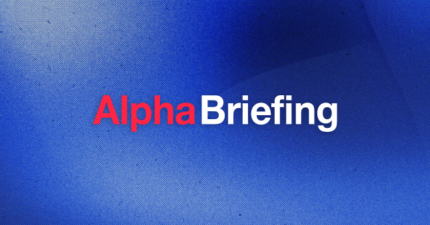How To Include Crypto in Your Retirement Savings Strategy
With a total market capitalization of $2.26 trillion at the time this article was written, it’s safe to say cryptocurrencies are on a roll. This, combined with banks’ growing acceptance of crypto, is among the reasons why more investors are embracing the digital asset space.
Cryptocurrencies offer diversification benefits and the potential for high returns, positioning them as an emerging option for retirement savings. In fact, 28% of millennials report they expect crypto to fund their retirement. This shows that the new kid on the block is on its way to becoming one of the top retirement choices for investors.
Is it worthwhile, though? And how exactly do you incorporate crypto into your retirement strategy? Read on to find out.
Benefits of Including Crypto in Retirement Savings
Despite being relatively new and more volatile than traditional assets like stocks, investors are increasingly adding crypto to their retirement portfolios. Why? Because it helps spread risk and has the potential for high returns.
Here’s a deeper look at the value of crypto in retirement savings:
Potential for High Returns
Although cryptocurrency has experienced some significant dips, it has shown remarkable resiliency, bouncing back over the years.
Bitcoin, for example, has grown in value since its inception — it sold at $0.05 in 2010, and today, it’s worth more than $58,000. While it slipped below the $50,000 mark in February this year, it quickly recovered to around $51,000 in March.
Unlike traditional investments like stocks, crypto experiences steady growth due to innovation and the adoption of advanced tech. As blockchain technology grows, there is an increasing demand for digital assets, which in turn, increases prices.
Take non-fungible tokens (NFTs), for example. They have not only increased the use cases of cryptocurrencies but also fueled further price increases.
Portfolio Diversification
Investing in crypto can be a smart move, especially if you want to shake up your portfolio with something different. A diversified portfolio is critical to managing risks. When you spread your investments across bonds, stocks, crypto, etc., you’re not putting all your eggs in one basket.
Crypto moves independently from traditional markets — it can act as a buffer when inflation spikes or during stock market downturns. This balance reduces overall risk while exposing you to crypto‘s high growth potential.
Hedge Against Inflation
Cryptocurrencies like Bitcoin can hedge against inflation as the dollar’s value declines against other currencies. Since Bitcoin has a limited supply — only 21 million BTCs will ever be mined — it’s often compared to assets like gold, which are valued for their scarcity. On the flip side, traditional currencies can be printed at will, driving inflation.
Moreover, cryptocurrencies operate outside government policies or central banks, which often affect inflation. When inflation causes the value of traditional currencies to drop, you can turn to crypto. Its independent nature might help preserve or even boost your wealth.
Increased Adoption and Growth
The crypto market is maturing thanks to institutional investors and financial products like crypto exchange-traded funds (ETFs), which add legitimacy. Further, cryptocurrency is revolutionizing fintech by increasing transaction speeds, lowering costs, and enhancing transparency.
This shines more light on digital assets, encouraging investors to include them in their portfolios. As more people invest in digital assets, this could lead to significant growth, making crypto investments a forward-looking retirement strategy.
Accessibility to Digital Assets
Accessing digital assets has become easier with self-directed individual retirement accounts (IRAs) and specialized retirement plans.
With traditional IRAs, you typically invest in mutual funds, stocks, or bonds through a custodian. But self-directed accounts allow you to invest in a broader range of assets, including real estate, precious stones, and cryptocurrencies.
Decentralized Finance (DeFi) Opportunities
DeFi is a blockchain technology that is shaking up the conventional financial landscape by eliminating the need for intermediaries like banks or brokers. With DeFi, you can borrow, trade, and earn interest on your crypto assets, all while enjoying reduced crypto exchange fees and having more control over your assets.
Embracing DeFi in your retirement plan means you have the potential to earn higher interest and boost your savings over time.
Further, DeFi platforms have innovative products like staking, which allows you to earn rewards for holding your crypto. These opportunities can diversify your retirement portfolio, giving you more ways to grow your assets.
Ways to Include Crypto in Retirement Strategy
If you want to add crypto to your retirement portfolio, here are some effective ways to do so:
- Self-directed IRAs: As mentioned earlier, these accounts allow you to invest in different assets, including cryptocurrencies, to diversify your portfolio.
- Crypto ETFs: This is a more accessible way to invest in digital assets. With ETFs, you can benefit from cryptocurrency price movements without having to purchase and store crypto directly. ETFs track the performance of one or more currencies, allowing you to diversify your investments.
- Mutual funds: Similar to ETFs, these funds expose you to the crypto market without requiring you to buy and hold assets.
- Direct purchase: You can also purchase cryptocurrencies directly through exchanges and hold them in a digital wallet. This strategy is comparable to investing in bonds and stocks, since you benefit from long-term price appreciation.
- DeFi platforms: You can earn interest and rewards from lending or staking your crypto assets on decentralized finance service platforms. DeFis can help you generate passive income and grow your retirement funds.
Steps To Include Crypto in a Retirement Strategy
Including crypto in your retirement strategy requires a bit of work, but we’ll guide you with a breakdown of the steps you can take to diversify your investments.
Step 1: Research Cryptocurrency Options
Before falling headfirst into crypto for retirement, familiarize yourself with popular options like Ethereum and Bitcoin. Bitcoin is viewed as digital gold due to its limited supply and long-term potential, while Ethereum is more about innovation.
When deciding which coins fit your long-term goals, consider market performance, adoption, and future use cases. How has the currency performed over time? What does the future hold for the coin? A currency with a strong development team and a clear plan for future growth could be a great addition to your portfolio.
A cryptocurrency‘s real-world use matters too. Ethereum, for instance, is used in decentralized apps (dApps) and smart contracts, making it a bedrock of DeFi.
This isn’t to say you should confine yourself to these two options. Research popular cryptocurrencies, including emerging ones, and assess their growth potential to ensure you pick the right ones.
Step 2: Choose a Suitable Retirement Account
Not all retirement accounts can hold cryptocurrencies. So you’ll need to do a little research to choose those that can. Self-directed IRAs are a great choice since they allow for several different types of investments, including crypto.
You can also explore crypto-focused 401(k) options, which may become more available as digital assets gain mainstream attention. Fidelity is the only firm offering crypto for its 401(k) accounts for now, but this may change in the future.
Choosing the right account sets the foundation for growing your crypto over time.
Step 3: Select a Trusted Custodian or Exchange
Security is vital when it comes to managing your crypto retirement investments.
Choose an exchange with a solid reputation and robust security measures, such as two-factor authentication, cold storage, and Know Your Customer / Anti-Money Laundering (KYC/AML) measures.
A reputable platform makes monitoring and managing assets easier, keeping your portfolio protected in the long run.
Step 4: Diversify Your Crypto Holdings
Like traditional investments, diversification is crucial in crypto investments. Spread your investments across different coins with varying use cases and growth potential.
Balance them with assets like stocks and bonds to reduce risk and protect your portfolio from market volatility. The goal is to create a strategy that gives you stability and high growth potential.
What Is a Crypto IRA?
A crypto IRA, like a Bitcoin IRA or Ethereum IRA, is a self-directed individual retirement account that allows you to invest in cryptocurrencies. It’s popular among investors who want to leverage blockchain technology to boost their retirement portfolios.
Here’s how it works:
- You open a crypto IRA with a cryptocurrency exchange or other custodian.
- You then fund your account with an existing IRA or 401(k), or by making contributions directly from your bank account.
- You buy and hold cryptocurrencies in a secure digital wallet provided by the IRA.
- You enjoy the tax benefits. If it’s a traditional crypto IRA, you won’t pay taxes on your earnings until you withdraw them during retirement. Conversely, if it’s a Roth crypto IRA, you’ll only need to pay taxes on contributions.
How Does a Bitcoin IRA Work?
A Bitcoin IRA is an excellent choice if you want the cryptocurrency to be part of your retirement nest egg. To get started, follow the steps below.
Account Setup
The first step to investing in Bitcoin through an IRA is to open a self-directed IRA with a custodian that supports crypto investments. Unfortunately, traditional financial institutions don’t typically offer Bitcoin IRAs. So you’ll need to find a platform or custodian that offers this asset class.
Some of the best Bitcoin IRA options include Bitcoin IRA, BitIRA, CoinIRA, and iTrustCapital. When making your choice, consider their management fees, security features, and the cryptocurrencies offered.
Once you choose a platform, register to start your retirement savings journey. You’ll need to provide details like your Social Security number, name, and bank account information. Depending on your chosen platform, you may also need to answer questions about your experience level and risk tolerance.
Funding Your Bitcoin IRA
As with other IRAs, you can fund your Bitcoin IRA in two ways:
- Direct contributions: You can deposit funds directly from your bank account, subject to IRA contribution limits. As of 2024, the IRA contribution limit is $7,000 for people below 50 years old and $8,000 for those aged 50 or older.
- Transfer or rollovers: You can deposit funds from your 401(k), another IRA account, or any other tax-advantaged account. This can help you minimize tax and management fees.
Buying and Holding Bitcoin
Once you’ve funded your Bitcoin IRA, you can move on to the crypto-buying process. The cryptocurrencies available will depend on your chosen platform. For instance, if you pick BitIRA, you can purchase Bitcoin, Bitcoin Cash, Litecoin, Stellar Lumens, and Ethereum.
Once you buy your digital currency, it’s stored in a secure wallet, typically managed by your custodian or an affiliated exchange. Many custodians and exchanges keep the assets in cold storage (offline) to eliminate online threats like hacking.
Tax Benefits
A Bitcoin IRA presents one of two significant tax benefits, depending on the type of account you choose:
- Tax-deferred growth: This applies to the traditional crypto IRA. Just like with a regular traditional IRA, you only need to pay taxes on gains made once you start withdrawals.
- Tax-free growth: This tax benefit applies to the Roth IRA. With this account, you pay taxes on the money you contribute upfront, so you can enjoy your withdrawals tax-free during retirement. If you expect cryptocurrency prices to skyrocket in the future, this may be the better option for you.
Withdrawals in Retirement
When you retire, you can start enjoying the fruits of your investments. As with other IRAs, it’s best to wait to withdraw funds from your Bitcoin IRA until you reach 59 ½ or older, since early withdrawals could result in penalties.
Penalties will differ based on your chosen IRA account. If you have a Roth IRA, the IRS won’t penalize you if you withdraw your contributions. However, it’ll charge income tax and a 10% penalty if you withdraw your earnings (any amount above your Roth contribution.)
For traditional crypto IRAs, early withdrawals will be subject to a 10% penalty, regardless of whether they’re from your contributions or earnings.
Tips and Considerations for Including Crypto in Retirement Savings
Cryptocurrencies can be a powerful tool for your retirement savings strategy, but do your due diligence before taking the leap to make sure it’s the right decision for you.
Here are some tips and considerations to keep in mind:
Assessing Volatility and Risk
The truth is, cryptocurrencies can be incredibly volatile. Further, they can pose liquidity and security risks.
Assess your risk tolerance before making crypto investments part of your retirement strategy. If you’re a high-risk, high-return kind of investor with experience in the crypto space, proceed with your decision.
If you’re a low-risk investor, first understand the digital asset landscape and learn some of the risk mitigation strategies you can implement to protect your investments. Some strategies worth considering include:
- Purchase different cryptocurrencies: Don’t just settle on one crypto asset. Diversify your portfolio by including various cryptocurrencies. Choose well-established options like Bitcoin alongside emerging cryptocurrencies like Pepe Unchained (PEPU).
- Invest in different types of tokens: Expand your portfolio with other assets like utility tokens and stablecoins.
- Buy tokenized assets: These digital assets represent ownership of tangible assets like real estate and collectibles. They can also diversify your portfolio, potentially minimizing overall risk and increasing returns.
- Stay updated: Follow reliable news outlets and crypto discussion platforms to learn about potential opportunities and market trends.
- Choose secure platforms: Only choose custodians and exchange platforms with advanced security measures in place to prevent unauthorized access.
Knowing the Regulatory Environment
Cryptocurrencies are still relatively new. So, despite oversight by bodies like the U.S. Securities and Exchange Commission (SEC) and the Commodity Futures Trading Commission (CFTC), there are some uncertainties regarding their regulatory environment.
However, things are starting to look up as these bodies get more involved in the crypto space. Stay updated on the evolving regulatory landscape and how it can impact your retirement investments so you can take quick, appropriate actions.
For instance, regulatory bodies may decide to hold custodians to the fiduciary rule — a regulation that requires financial planners, advisors, and institutions to act in their clients’ best interests. If this happens, you may find it more beneficial to invest your funds in a managed IRA.
Understanding Tax Implications
The last thing you want is to have the IRS on your back due to tax mistakes with your crypto investments. It can result in high penalties, impacting your retirement savings.
So it’s important to understand the tax implications of holding and trading cryptocurrencies within retirement accounts and how different account types can affect tax obligations. As discussed earlier, the IRS expects you to pay taxes on withdrawals if you have a traditional crypto IRA and tax on contributions if you have a Roth IRA.
Ensuring Security and Storage
Secure your retirement savings by choosing trusted custodians with robust security protocols. Some vital security measures to look for in a provider include:
- Multi-factor authentication
- Multi-signature wallets
- Cold storage
- Geographically dispersed data centers
- Regular audits and penetration testing
These measures protect crypto assets within a retirement portfolio by minimizing the risk of unauthorized access and hacks.
How AlphaPoint Is Empowering Crypto Exchanges for Retirement Savings
Including crypto assets in your retirement savings can be a great move. They have the potential to drastically increase your savings, protect you from inflation, and diversify your portfolio, minimizing overall risk. They can also offer tax benefits like tax-free or tax-deferred growth.
To fully enjoy these benefits, invest in the right IRA account and pick a reliable, secure custodian who offers your preferred cryptocurrencies.
AlphaPoint paves the way for reliable crypto exchanges and custodians by providing tried-and-tested digital infrastructure. Our technology is built to ensure maximum security and efficiency, making it easy for financial institutions to securely and quickly provide access to digital assets for retirement portfolio diversification.
Schedule a demo today to see how we help businesses launch crypto exchanges and expand their offerings.


